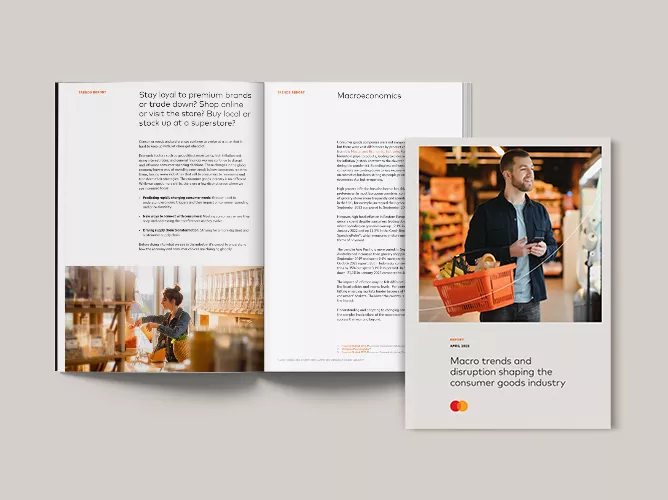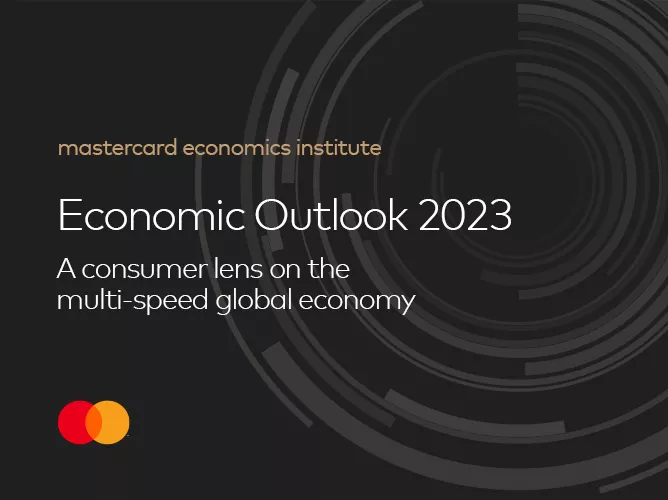Fintech brands run the perpetual risk of falling by the wayside if they don’t evolve.
With funding peaking in 2021 and global fintech venture capital funding seeing a 38% year-over-year decrease in the second half of 2022,1 the fintech industry has tightened financially. Investors are looking at different metrics to evaluate, shifting from growth to profitability and favoring late-stage deals.
To keep pace, consider the trends below.
Shifting to sustainable business models
The future for fintech companies is portfolio optimization and customer activation
Many fintech companies have been hyper-focused on attracting consumers who want a new approach to meeting their financial needs. But acquiring as many untapped audiences as possible will only last so long. Once that novelty wears off, competition will intensify as the lines between traditional banks and fintech companies blur. The focus for fintech companies will start to turn to nurturing and retaining customers to reach profitability and remain competitive.
Fintech companies aren’t quite there yet. A recent analysis of neobanks, a subsegment of fintech companies, revealed that only 5% of the world’s 400 neobanks are actually profitable.2
Today’s decreases in early-stage funding have led to a demand for more sustainable models to achieve better revenue. Facing depleting pools of new customers, fintech companies will soon need to activate their current customer bases through engagement and cross-selling, ultimately allowing them to derive the most value from each customer relationship.
APIs open doors to even more
Fintech companies see potential with new verticals and specialization
Banking as a Service (BaaS) is a recent buzzword in the anything “as a service” trend, but the concept is not new. White-label partnerships between traditional banks and established retailers, car dealerships or airline brands go back more than a decade, but they were uncommon and expensive to deploy. APIs changed all that by giving rise to embedded finance.
Initial BaaS partnerships were between banks and API-first fintech companies, which could offer enhanced financial services more efficiently when embedded. More recently, API-first tech companies outside of the financial space, such as e-commerce marketplaces or rideshare apps, are benefitting from embedded finance. These partnerships will potentially extend to all companies in the future that adopt API-based business models. Now, as more and more companies start adopting APIs, the customer base for fintech companies as distributors can not only potentially expand to any brand out there, but also increase profitability though specialization in specific market segments.
Embracing and adopting
Being first adopters of new technologies is driving businesses
The fintech sector knows it can’t just rest on its laurels, so it is continually monitoring and developing alongside the progression of technology. Intrinsically, traditional needs — like lending and payments — present new opportunities for fintech companies to be supporting partners of other players.
And with new technologies like DeFi, Web3, generative AI and blockchain, the potential for fintech companies quick to market is massive. Mastercard is working with several blockchain startups through its Start Path Digital Assets program to grow and scale their businesses, which focus on digital assets, cryptocurrencies, blockchain value-added services and the metaverse.
The fintech startups are working on everything from empowering merchants to pay, receive and transfer funds, including card, cash and crypto to providing vendors and creators with tools to create Web3-based customer loyalty schemes.
One of the newest entrants to the program include Coala Pay, a blockchain-based payment gateway that enables merchants to accept cryptocurrency payments. Another company, Qonbay, is a decentralized marketplace for tokenized assets. Suberra is enabling the acceptance of cryptocurrency payments for recurring subscriptions, metaverse commerce and marketplaces.
These technologies will continue to evolve, allowing fintech companies to adopt and expand their offerings.
Everything, everywhere, all in one place
Fintech companies are moving to a super-apps ecosystem approach
Super-apps aim to meet multiple consumer lifestyle needs on a single platform as a one-stop portal for numerous consumer journeys. With the top 13 super apps raising $32B in funding,3 they are gaining traction in emerging markets.
Their status in Asia, for example, has reached a point where they are users’ main financial relationship. This largely evolved from the incorporation of financial services into existing social media, e-commerce and gig economy platforms.
Likewise, digital-native neobanks are following the same strategies, enriching their value proposition — by including savings, lending, crypto trading and personal financial management — to create diversification and gain customer’s share of wallet with the goal of becoming their customers’ primary bank.
Bundling functionalities not only offers customers pricing breaks, but also gives the super-apps access to even more data and insights about their customers. With success, companies can find their way into other markets, further diversifying their revenue and reaching profitability. The power of a super-app ecosystem ultimately lies in the data and what a company does with it.
Fintech for finclusion
There is a stronger focus on financial inclusion and social good
Globally, many people around the world still lack the financial-services they need to build better lives — 1.4 billion adults remain unbanked according to The World Bank — impacting individuals and small businesses.
The provision of financial services used to be purpose-driven but largely pro-bono. Now, alternative ways to provide access to digital payments and loans have made the pursuit purposeful and profitable. There is a promising opportunity for fintech companies that are able to find different ways of providing credit risk assessments, KYC compliance, lending, credit and insurance.
Fintech companies operate as catalysts, utilizing technology to leapfrog traditional hurdles and become brand-new points of entry for financial services.

How a fintech company in Latin America targeted the underserved and saw a 115% increase in account openings.
A fintech company wanted to reach underserved people by offering a platform to make withdrawals, transfers and payments online. Using Mastercard Performance Engine, it acquired new users across multiple channels, activated new accounts and saw a 119% increase in organic conversion rates with their approach, ultimately providing the underserved with lending and credit opportunities once considered unlikely.
Financially sustainable sustainability
Environmental awareness moves to the industry forefront
More than half of consumers globally say environmental sustainability is more important to them today than it was 12 months ago.4 And they are not the only ones.
More fintech companies are doing well by prioritizing doing good. After all, sustainability plays a big role in how organizations are assessed by investors, consumers and other organizations.
The efforts come in many forms - from the removal of first-use PVC plastics from all payment cards, to the protection of critically endangered species and planet biodiversity to the growing membership of the Priceless Planet Coalition. Sustainability efforts are growing in B2C and B2B industries.
Strengthening businesses, creating long-term value and benefitting the environment, sustainability has shifted from a trend to a permanent fixture.

How to help the world 100 million trees at a time
Climate change is a climate crisis. Forests regulate the world’s oxygen and carbon cycles, and the loss of forests puts the climate at risk. Mastercard’s Priceless Planet Coalition unites the efforts of merchants, banks, communities and consumers to restore 100 million trees by 2025, focusing on areas of greatest global need. This simple method is designed to restore the planet’s forests in both a cost-efficient and highly impactful manner. Learn more about how to join the Coalition, which includes more than 100 partners globally, teaming up to encourage people to rethink their relationship with the natural world.
To learn more about fintech trends and solutions, watch our on-demand webinar as Mastercard experts and Zolve's CEO discuss trends, challenges and opportunities shaping the future of the industry.
2 Simon-Kucher. “The Future of Neobanking How can Neobanks unlock profitable growth?” 2022.
3 Kaiser Associates. “Fintech Growth Analysis: Global Trends & Innovation. 2022.
4 IBM. “Balancing sustainability and profitability”. 2022.












